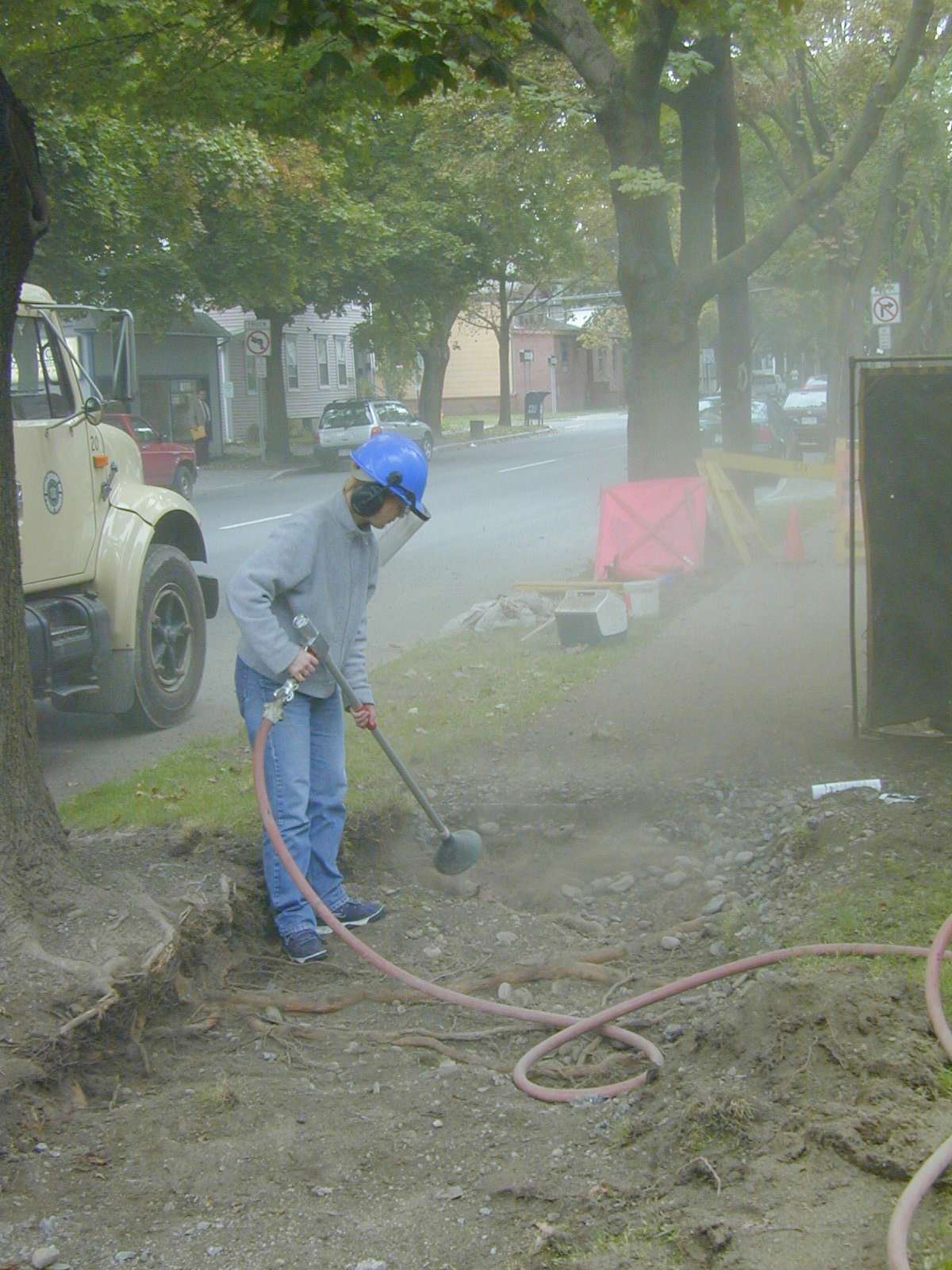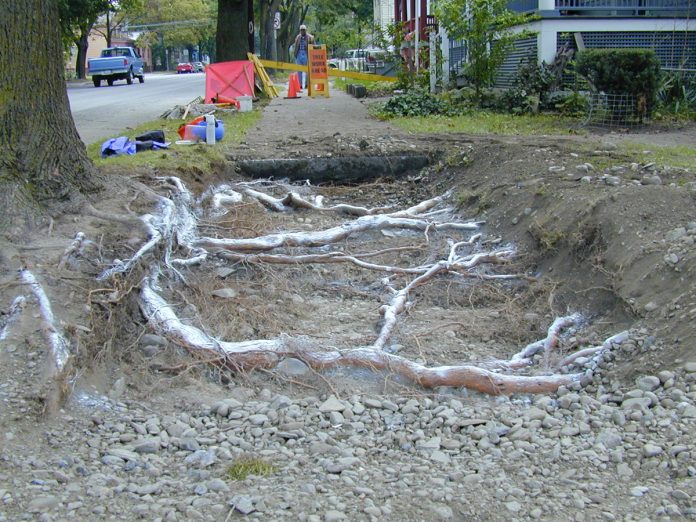Nina Bassuk from the Urban Horticulture Institute, School of Integrative Plant Science Cornell University shares her thoughts on the value of green spaces in inner cities and how we should choose the best trees for this purpose
The world’s population is increasingly urban. In the United States alone, 85% of the population lives in urban areas and that trend is expected to continue. If we value the green spaces and trees in our cities and parks for all the benefits they give us, we need to choose the best trees that will thrive in challenging sites.
There are four basic principles of urban tree selection:
- Trees should be pest resistant and adapted to urban environmental conditions.
- Trees should be highly diverse, including native and non-native species, but avoiding invasive species.
- Trees should meet functional and design objectives.
- Trees should match management limitations.
When we investigate these principles, it is worthwhile to delve into specifics.
Pest resistant – adapted to environmental stress
Due to the inherently heterogeneous nature of the urban environment, tree planting sites are subject to microclimates caused by buildings and paved surfaces and the aftereffects of urban development written in the soil. On a warm sunny day when the air temperature is 24°C, the surface temperatures of pavement or building walls can reflect 40-52°C temperatures. Taken altogether, this increased heat gives rise to the urban heat island where inner cities are considerably warmer than surrounding rural areas. With increased air temperatures, trees lose water from their leaves more rapidly than a rural tree. Coupled with often-restricted planting spaces or soil that is paved over, trees experience drought stress even during what would be considered normal summer temperatures and rainfall.
With the addition of climate change, cities experience longer periods without rain and then heavy downpours. The negative effects of too much water can also be stressful for trees when air-filled pores in the soil are filled with water depriving the tree roots of needed oxygen. Above ground, trees also have to compete with utility wires, streetlights, traffic and business signage. These cause conflicts if sight lines or electricity delivery is disrupted requiring drastic pruning to squeeze the tree’s canopy into the allotted space.

By far, the most stressful urban condition for trees is the lack of accessible soil. This is caused by inadvertent and purposeful soil compaction. When any new road or building is built or demolished, the soil within the area inadvertently becomes compacted due to the use of heavy machinery and moving of earth. Once compacted and crushed, it is difficult to bring back the soil so that it can support plant life. Moreover, when any pavement is laid, the soil beneath it must be purposefully compacted to bear the load of the new pavement to prevent subsiding or cracking.
Tree roots provide, water, nutrients and oxygen for healthy tree growth. When soil volume is restricted these basic building blocks for tree growth can be severely restricted. Combined with reflected heat from building and pavement, poor water infiltration due to impervious surfaces, waterlogged soils that don’t drain and often poor nutrient availability, it is no wonder that urban trees live a shortened life.
However, most people who enjoy a tree covered street would say that things cannot be that bad. After all many trees get big and provide many of the benefits we enjoy.
Where are the roots?
Whenever there is a large tree, there is a corresponding large, wide-spreading root system that supports that tree to supply water and nutrients.
With the use of air excavating tools, we have peeled back the soil to find where roots are growing. In many narrow, green, planting areas adjacent to roads, tree roots break out of the limited soil by exploiting the area of weakness at the interface between the sidewalk and underlying soil. When they do this, roots find accessible soil in someone’s front or backyard or nearby vacant lot. Inevitably the roots of a large tree may not be where you think they are. When roots grow under pavement and increase in girth by radial growth, sidewalks may be raised causing tripping hazards, which set up a conflict between trees and municipalities.
We can select trees that are adapted or tolerant of to:
- Small planting envelopes (above and below ground) by choosing small trees;
- Heat and cold temperatures;
- Dry and wet soils;
- Poor nutrient availability and salts and;
- Insect and diseases.
Each one of these conditions is a filter reducing the potential trees that may be chosen. It is notable that the more we can reduce the stress on trees, the greater the choices we can make will be.
The one factor that no tree is adapted to is compacted soil. Compaction physically restricts root growth and prevents the acquisition of water, nutrients and oxygen. When this occurs, soil remediation must occur to engineer a more sustainable soil condition.
Highly diverse, non-invasive
I am often asked, “What is the best urban tree.” There are many common street trees that are preferentially grown in cities worldwide. In the eastern United States, maples (Acer spp.) make up about 40% of the urban tree population. In Scandinavia and other parts of Europe, lindens (Tilia spp.) make up a very large percent of the urban tree population. The problem with growing just a few tried and true species is that if they become susceptible to an insect or disease (and inevitably there is always some new insect or disease!) the demise of these trees causes an enormous negative effect on the urban landscape. We have the example of Dutch Elm Disease decimating elms, Emerald Ash Borers killing all the ash trees, Asian Long Horned Beetles destroying maples and a host of other species, as well as other examples. The only true defence against pests is to plant a very diverse urban forest.
Native or non-native?
It is clear that the urban environment has been fundamentally altered by development and human habitation. The choices of trees must consider these environmental conditions and choose plants that are adapted to them.
The popular ideology promoting native species only disregards the fact that urban conditions are nothing like native conditions where many trees evolved.
The best choice is to use both native and non-native trees when they are adapted to urban site conditions. A few species have become invasive, causing economic and environmental harm, as well as harm to human health. Identifying these trees varies on a local level and should be avoided.
Trees provide ecosystem and aesthetic benefits
Increasingly we are recognising and quantifying the benefits that trees provide in the urban environment including reducing storm water runoff and pollution, providing habitat for pollinators, sequestering carbon, reducing air pollution and providing significant energy conservation in summer and winter. Tree choice affects the accrual of benefits. Trees with large canopies provide the greatest amount of energy conservation, storm water runoff reduction and carbon sequestration. A diversity of trees that flower from spring through fall will provide the greatest benefit to pollinators and other urban fauna.
What about the cost of tree management?
Many cities have quantified the benefits they receive from healthy trees. In all cases, the cost of management (preparing sites, choosing good trees and providing reasonable aftercare) is far outweighed by the ecosystem benefits that are gained.
We take trees for granted. Only when many trees are removed do people realise the difference trees make in their lives. Continued research focusing on better tree selection for challenging urban sites will provide long-term benefits that we can all enjoy.
Please note: this is a commercial profile
Dr Nina Bassuk
Professor
Urban Horticulture Institute,
School of Integrative Plant Science
Cornell University, New York, USA
Tel: +1 607 255 4586











